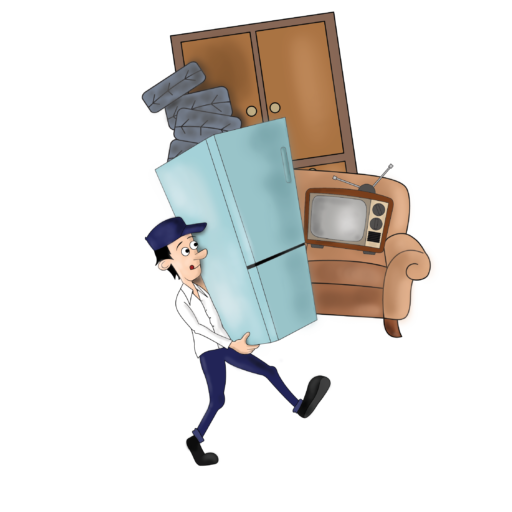Moving Checklist
Moving Checklist
Don’t let a big move cause stress — stay on track with this step-by-step moving checklist. Designed to help you know what to do before, during and after a move, this helpful guide is an easy way to stay organized. We recommend printing it and keeping it on-hand throughout your entire move.
2 months before
- Start researching your new community, and look for housing, schools and childcare. Knowing where the best opportunities are can help you find the perfect area for your family.
- Collect records. Compile medical and dental records, and arrange to have school and veterinarian records transferred to your new location. Gather copies of legal and financial documents, and create a move file to keep track of quotes, receipts and other important information.
- Get quotes. Collect estimates from moving companies, and create a moving budget.
6 weeks before
- Inventory items. Plan how you will move valuables and difficult-to-replace items, and begin purging your home of things you don’t want to move. Consider having a garage sale or donating items you no longer need.
- Know what you can and can’t move. Use items such as frozen foods, cleaning supplies and aerosols in advance, make travel arrangements for your pets, and plan how to transport your plants so you’ll be prepared on moving day.
- Start packing. Order boxes and moving supplies, and begin packing items you don’t use often. Clearly label each box with its contents and the room it’s destined for. This is also a good time to review packing and loading tips.
1 month before
- Reserve your move. If moving with Hands on Moving, reserve your move online or by calling 586-930-5585.
- Notify utility services. Call these departments at your current and future locations to cancel, transfer or set up new service:
- Electric
- Water
- Gas
- Cell phone
- Cable/satellite, internet and landline phone
- Sewer
- Trash collection
- Get automobile serviced. Check oil, fluids, air pressure and other components to ensure everything is functioning properly before you make the trip to your new home.
2 weeks before
- Update address. File a change of address with the Postal Service, or ask them to hold your mail at the post office in your new city. Notify friends and family of your new address so you can stay in touch.
- Notify other businesses. These services/accounts should be aware that your address is changing:
- Auto finance company
- Insurance company
- Bank/Credit union
- Credit card companies
- Health club
- Home care service providers (lawn, exterminator, snow removal, etc.)
- Laundry service
- Magazines/Newspapers
- Monthly memberships (Netflix, book of the month, etc.)
- Pharmacy
- Any other service that would need an updated billing address
- Notify government offices. Contact these offices before you move:
- City/County Tax Assessor
- Department of Motor Vehicles
- Social Security Administration
- State/Federal Tax Bureau (IRS)
- Veterans Administration
- Arrange for parking. Make sure you know where your moving truck will go and where any moving help will park. Obtain parking permits if needed.
- Plan meals. Prepare meals that use up any perishable food you may have during the last weeks before your move.
- Prepare the house. Assemble a folder of important information about your house for the next home owner, and make sure you complete any necessary repairs. Leave a note with your new address so future residents can forward stray mail.
1 week before
- Review moving plans. Call or email your moving company with questions.
- Prepare for payment. Contact your bank or credit card company if you’re planning to pay for your move by debit or credit card so you won’t receive any fraud alerts. You may also want to mention that you’ll be traveling so your card won’t get declined for suspicious spending activity.
- Pack an essentials box. Fill the box with things you might need once you arrive at your new house (paper products and utensils, light bulbs, small tool kit, trash bags, scissors, etc.). Pro tip: load the essentials box onto the moving truck last so that it’s the first thing you unload upon arrival.
- Pack for travel. Bring enough clothes and toiletries to cover the days you’ll travel as well as the first days in your new home. Don’t forget to refill prescriptions and bring them with you, too.
- Prepare appliances. Drain gas and oil from lawn equipment, gas grills, heaters, etc., and empty and defrost the refrigerator/freezer at least 24 hours before the move.
- Measure furniture and doorways. Measure large items to determine if they will fit through the door. Plan an alternate route if necessary.
Moving day
- Clear a path. Make sure nothing is blocking the walkway from the house to the moving truck, and place carpet, floor and door frame protectors throughout your home to avoid scratching surfaces.
- Do a final walkthrough. Check every room and closet one last time to make sure nothing is left behind.
Moving in
- Clean and inspect. Scrub surfaces, and make sure everything is working properly before your household goods arrive.
- Unload your items, and begin organizing your new home.
- Get settled. Pick up any mail being held at the local post office, get a new driver’s license and automobile tags (register to vote while you’re at it), and locate places such as gas stations, doctor’s offices and grocery stores.



